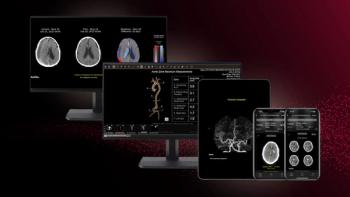
CCTA Effective Gatekeeper Exam for Heart Disease Patients
Use of coronary CT angiography can effectively reduce the number of invasive procedures, which supports CCTA’s role as a gatekeeper to coronary angiography.
Use of coronary CT angiography can effectively reduce the number of invasive procedures, a finding that supports CCTA’s role as a gatekeeper to invasive coronary angiography, according to a study published earlier this month online in the
Studies evaluating patient management following CCTA have been few, despite its reported accuracy, said the researchers, who were from various centers across the United States. Exams such as invasive coronary angiography (ICA) are costly and have risks, so its use should be appropriately limited.
For this study, researchers assessed 15,207 patients from eight sites in six countries who did not have known coronary artery disease (CAD) and who underwent CCTA and were followed for a mean of 2.3 years, +/- 1.2 years. The patients were part of a large database, the Coronary CT Angiography Evaluation for Clinical Outcomes (CONFIRM). Coronary artery stenosis was judged as obstructive if there was 50 percent or more stenosis present. The researchers were looking for all-cause mortality, rates of invasive coronary angiography, and revascularization (REV). Other data, such as presences of excessive dyspnea and chest pain (categorized as nonangina, typical angina, or atypical angina) were also noted.
Researchers found at follow-up that ICA rates were low for patients who did not have CAD (2.5 percent) or who had mild CAD (8.3 percent) and there were similarly low rates for REV, 0.3 percent for those without CAD and 2.5 percent for those with mild CAD. Seventy-nine percent of ICA procedures occurred three months or earlier following CCTA.
Patients with obstructive CAD in one vessel had rates of 44.3 percent for ICA and 28.0 percent for REV. Patients with obstructive CAD in two vessels had rates of 53.3 percent and 43.6 percent, respectively, and those with three affected vessels, rates were 69.4 percent and 66.8 percent, respectively.
Only 0.02 percent of patients with no CAD history underwent percutaneous coronary intervention (PCI) and 0.1 percent underwent coronary artery bypass graft (CABG). For those with mild CA or obstructive CAD, the numbers rose a bit to 2 percent for PCI and 7.3 percent for CABG.
According to the authors, these findings support the use of CCTA as a gatekeeper to ICA, reducing unnecessary use. “Patients with no or mild CAD were uncommonly referred to ICA," the authors wrote, "while in those with more extensive and severe obstructive CAD, a gradient increase in ICA and REV use was observed."
Newsletter
Stay at the forefront of radiology with the Diagnostic Imaging newsletter, delivering the latest news, clinical insights, and imaging advancements for today’s radiologists.



























